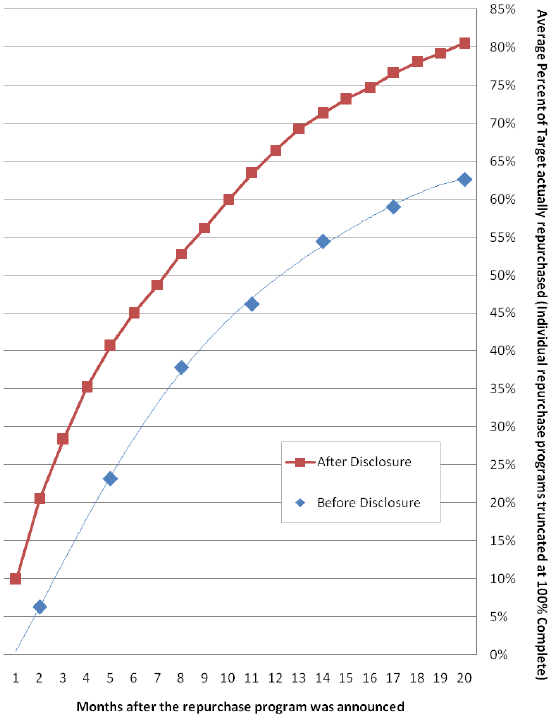Since the mid-1980s, stock repurchases have increasingly displaced dividends as a means for companies to return cash to the equity market. Buybacks affect stock prices by reducing the the denominator in the earnings per share calculation, thereby elevating the value of shares still outstanding. However, firms that announce buybacks may not actually execute them, or may execute them only partially. Are stock buybacks, due to increased information transparency, more reliable now than they used to be? In his recent paper entitled “The Effect of Enhanced Disclosure on Open Market Stock Repurchases”, Michael Simkovic examines whether the SEC requirement that companies disclose repurchase activity on a quarterly basis as of 2004 has increased the likelihood that firms will follow through on buyback announcements. Using repurchase activity data over the 20 months after each of 365 buybacks announced during 2004 for comparison with data from two pre-disclosure studies, he concludes that:
- The average target of new 2004 buyback announcements is about 7% of shares outstanding.
- Firms implement large repurchase programs a bit more slowly than small ones.
- Repurchase execution rates are substantially higher post-disclosure than they are pre-disclosure. After (before) the disclosure rule, repurchases tracked for 20 months after announcements are 80.3% (62.6%) complete based on an equally-weighted average. (See chart below.)
- The disclosure rule increases the percentage of firms completing 100% of announced buybacks within 20 months from 41% to 60%.
The following chart, taken from the paper, depicts the equally-weighted average percentage completion of buybacks during the 20 months after firms announce them. It shows that companies execute buybacks more quickly and completely after the disclosure rule. Because the pre-disclosure benchmark studies offer quarterly rather than monthly results, there are fewer data points for the pre-disclosure comparison.

The author likens the retroactive disclosure rule to forcing poker players (specifically, firms announcing buybacks) to show their cards after playing their hands. The rule does not prevent bluffing, but it allows investors to identify the bluffers.
In summary, share repurchase announcements are now more reliable indicators of actual buyback activity, and consequent beneficial impact on earnings per share, than they were before 2004.